Ep. 161: Board Meetings | Why Am I Still Getting Pumped?
Literally every season, as soon as people are able to get outside, I get the same message. Dozens of times.
"Why am I still getting pumped? The training didn't work! I wasted all that time!!"
While I can almost understand the gut reaction when you've built up the expectations, I can't sympathize. You should know better. Now you will.
FULL EPISODE TRANSCRIPT:
Kris Hampton 00:31
What's up everybody? I'm your host, Kris Hampton.
Nate Drolet 00:34
And this is Nate Drolet.
Kris Hampton 00:36
And together we form.... I think I've used this before but Hans and Franz, because we're here to pump you up.
Nate Drolet 00:46
Yes. I think that was with Paul.
Kris Hampton 00:48
Oh, I think it was, you're right. Yeah.
Nate Drolet 00:50
You always give him the easy ones. "Hey, Paul, you know, together we formed peanut butter and jelly. Ever heard of that one? Yeah, as a good one. Hey, Nate, here's some 80s Rap reference. Good luck."
Kris Hampton 01:02
Well, you know, I'm trying to give you the good stuff. I'm trying to increase your level of culture.
Nate Drolet 01:07
I appreciate that. Hey, I mean, I listened to
Kris Hampton 01:09
Not that Hans and Franz aren't culture.
Nate Drolet 01:12
I listen to albums entirely now because of you
Kris Hampton 01:14
See!
Nate Drolet 01:14
It was just songs before that.
Kris Hampton 01:16
See, it's good. Good things are coming of this. But no, Hans and Franz, I think fit this one really well, because we're talking about this... I don't know if, if calling it a myth is correct. It's a
Nate Drolet 01:31
Misconception?
Kris Hampton 01:32
Misconception. Yeah. It's something we hear pretty regularly from clients who have been through this training cycle. They've been super dedicated. They done all the work, punched the clock, and then they go outside, and they get on a route and they're like, "Why am I still getting pumped?"
Nate Drolet 01:53
"I got so pumped. I don't Yeah, I don't know what happened."
Kris Hampton 01:56
"Yeah, training didn't work, you know, I got pumped. It's over. I might as well throw in the towel now." And it's, it's shockingly common to think that, because you've trained a lot of anything, endurance, or whatever, that you shouldn't get pumped. And I think that's a not only is it just a misconception, but it can also really harm your mental game.
Nate Drolet 02:24
Oh, yeah.
Kris Hampton 02:24
When you suddenly decide that all this work, you've put in didn't work. And I've heard multiple people... the first time ever heard this was a friend of mine. And I remember standing at Solar Collector with him and him saying, "Well, once you're at this level, you don't get pumped anymore." And I was like, "Really? Is that true? That can't be true." And I've since gone way past that level, and I still get pumped.
Nate Drolet 02:55
Yeah, yeah.
Kris Hampton 02:56
Everyone I know gets pumped except for maybe like, nine year olds. They just don't.
Nate Drolet 03:01
Yeah, I don't think they're physiologically capable of getting pumped.
Kris Hampton 03:04
Yeah. Do you, is this something that you've heard recently? I know you've heard it before, but has it persisted?
Kris Hampton 03:10
That high level climbers don't get pumped?
Kris Hampton 03:11
No, just that people don't understand why they're still getting pumped
Nate Drolet 03:14
Oh, yeah. I mean, this is a weekly thing. You know, a lot of the people I work with are sport climbers. And just, I like to chat with people all the time. And, you know, pump like... it's the one of the easiest things to perceive when you're climbing. Like if you're sport climbing. It's kind of hard to tell like, "Hey, was I efficient in that low like V3 section? I may be a V( climber but could I like, so it's easy for me. But, you know, maybe I could have been more efficient." Like, that's hard to tell, things like that.
Kris Hampton 03:45
And how much effort was I putting in on this relatively easy section?
Nate Drolet 03:49
Yeah
Kris Hampton 03:50
You know, you can you can change how it physically affects you by the amount of effort that you're putting in
Nate Drolet 03:56
Completely. You can turn V3 into V8 real fast. You know, how is my breathing? How's my pacing? These things, like they're hard to conceptualize. But how flamed my forearms are like, you know, they're swollen, I can barely close my hands. That's a really easy one. And so it's something that your mind kind of races to, very quickly. So it's, it really overshadows a lot of other things.
Kris Hampton 04:22
Yeah, I think so too. And maybe a good way to start this would just be.... first off you and I get pumped
Nate Drolet 04:30
All the time. Every day.
Kris Hampton 04:31
I assume at least sport climbing anyways
Nate Drolet 04:32
Yeah. I've reached that level. Sorry.
Kris Hampton 04:35
Haha. I get pumped bouldering if I don't rest too much in between.
Nate Drolet 04:39
Yeah
Kris Hampton 04:39
You know, I just do. And I think a good way to start this instead of just saying "Hey, we're two relatively regular guys that you know, climb in maybe the top third of the the climbing world", but there are also some of the best sport climbers on the planet, some of the best endurance sport climbers on the planet, get pumped. And I just did a quick Google search. It took me all of 15 minutes to find some really great examples.
Nate Drolet 05:13
Oh, cool.
Kris Hampton 05:13
And I've heard I've heard coaches say that pro climbers don't get pumped.
Nate Drolet 05:19
I've heard that too.
Kris Hampton 05:20
You know, I've heard from lots of climbers that Jonathan Siegrist never gets pumped. You know, and when you standing on the ground, it might not look like it.
Nate Drolet 05:28
They never look like they get pumped. They are so composed.
Kris Hampton 05:30
Yeah, that's one of the key, you know, key aspects of watching a really great climber is that you can't tell when they're about to fall off. They've learned to climb really well through that pump.
Nate Drolet 05:43
Yeah.
Kris Hampton 05:44
But some of the quotes I got, and all of these aren't all complete quotes. But Jonathan Siegrist, talking about Planta de Shiva, which is a 15b he recently redpointed and you can hear this interview on the Training Beta podcast talking with Neely. He describes his experience on there as "ballistically pumped". You know, there's a plant at the top of the route that everyone has grabbed to clip the chains
Nate Drolet 06:10
Nice.
Kris Hampton 06:10
And he said he was so pumped there, he could barely hold on to the plant to clip the chains.
Nate Drolet 06:15
Oh man.
Kris Hampton 06:16
And Adam Ondra, you guys probably heard of him, on Biographie, when he was trying to flash it, 15 A flash attempt, ee said he couldn't do the stab to the little pocket because he was way too pumped. Alex Megos, also a decent climber, on a route called TCT which was a 14D onsight, in talking about his day that day, he said earlier in the day, he did an 11B and got "totally pumped". On an 11 B. It happens. And then Mego also said something really interesting about climbing on UK limestone. He said, "Every route is basically just with underclings and sidepulls and because of that I got pumped faster than normal." So A) faster than normal indicates that he normally gets pumped and B) the change in style caused him to get pumped faster. And then a couple other quick ones from Ondra on Robin Ud I guess is how you say, it's a 15b that he redpointed. He called it "quite pumpy". He called Mamichula, a 15b, "too pumpy." I don't know what "too pumpy" means but it was too pumpy haha.
Nate Drolet 07:40
Haha. "Too pumpy. I did it but it was just too pumpy."
Kris Hampton 07:43
And then on Papi Chulo, the neighbor of Mamihula Siegrist said, "One of the most pumpy routes I've ever climbed". So these are the best endurance climbers that we know of, you know, the people who are climbing 15a, 15b, 15c, 15d even, you know, and they're still getting pumped. So if you're climbing 5.12, 5.13, 5.14, whatever it is, and you get pumped, that's... to quote Alex Megos... "normal".
Nate Drolet 08:17
Yeah. And you know, some of you might be thinking right now like, "Okay, yeah, we get it. People get pumped and like I already know this." But I think there's a big it's important to kind of take in the big picture of it. Climbing in the Red is are really good example because you get pumped on everything.
Kris Hampton 08:36
Yeah
Nate Drolet 08:37
Like when I was fit enough that I could....when I was the fittest I've ever been, like, I had a day where... the day did Transworld, I also felt one of the anchors on Omaha twice. So like, three near sends of 5.14. My warm up was a 5.11 than it did twice. I got a little pump both times. I did a 5.13 after that, that I got pretty pumped on and every time I got on one of those 5.14s, I got really pumped multiple times.
Kris Hampton 09:07
Yeah
Nate Drolet 09:07
Like get pumped, find a rest, bring it down, get pumped, find a rest, bring it down. Like I was pretty much uncomfortable from the first pitch all the way to the end.
Kris Hampton 09:16
Absolutely.
Nate Drolet 09:17
And that's just.... man that's sport climbing. That's why it's hard. Like, you know, if you're not getting pumped, that's I mean, if anything, it's just either that's the type of style you're on. You know, if you're on a two bolt rock climb, maybe you're not going to get pumped. But you know, maybe you're just on too easy of climbs.
Kris Hampton 09:36
Yeah
Nate Drolet 09:37
Like I can go climb 5.10 and not get pumped.....hopefully
Kris Hampton 09:40
Sometimes I do get pumped on 5.10 hahaha.
Nate Drolet 09:41
I was gonna say I was immediately thinking of 5.10s where it's like I have to smear and do like weird things and like, I still get pumped. Yeah, I still get bumped on 5.10, like even in 5.14 shape.
Kris Hampton 09:51
Yeah. Do you think there was something that happened at some point...and I have a theory about this....but do you think there was something that happened that caused to people to believe they shouldn't be getting pumped?
Nate Drolet 10:03
It's really a nice thing to believe in. Like, wouldn't it be great?
Kris Hampton 10:07
Hahaha
Nate Drolet 10:07
Like, wouldn't it be so awesome if you could just train to get wicked strong and just absurdly fit and you just don't get pumped? Like, what if you could be a runner and just get super fit that you can jog a four minute mile?
Kris Hampton 10:18
Yeah.
Nate Drolet 10:19
I mean, which no one ever has ever. Like a four minute mile is still hard work even for guys like Kipchoge, who, you know, run multiple, like, what was he running? Like 4:16s for some marathon?
Kris Hampton 10:30
Yeah something crazy like that.
Nate Drolet 10:31
Yeah, a four minute mile, like a sub four is still hard for him. He's still putting out effort. He's just good at doing it a lot.
Kris Hampton 10:40
Yeah, and he's fatigued.
Nate Drolet 10:41
Fuck, yeah
Kris Hampton 10:42
He's tired. You know, he just works through it really well.
Nate Drolet 10:46
Yeah
Kris Hampton 10:46
My theory is that when the like, magic bullet of ARC training got really popular, people suddenly started thinking, "If we do this style of training, we're never going to get pumped. We're going to be so good at moving lactate through our system"...... or "lactic acid" for all you people who hate the fact that that word still used....:"moving it through our system, we're going to get so good at it that we're just never going to get pumped." And I saw a lot of people in the gym and that's when I wrote the article on the blog called "Sinking the ARC" years ago, because I was seeing people in the gym whose only endurance training was ARCing. And then they would get pumped on something hard and they'd flip out because they didn't know what to do. And they're like, "The training isn't working." And I'm like, "That's not really what you're training. You're training something totally different. "
Nate Drolet 11:40
Yeah.
Kris Hampton 11:41
So I think that the misunderstood aspects of ARC training, because I think it is a valuable tool.
Nate Drolet 11:48
Totally, like low level endurance training. I mean, like, all endurance athletes do it. It's super useful. But you know, like, if you're yeah, if you're a high level endurance athlete, like, you don't just go out for a ton of slow, easy miles and hope that that takes care of everything,
Kris Hampton 12:05
Riight. Yeah. Are there situations where you see people having an experience in common, where it's, they get pumped when they don't think they should be? And why do you think they're getting pumped?
Nate Drolet 12:21
Oh...all the time. I've got about 30 of them listed. One that I see a lot is.....I'm trying to think where to start. We'll start with style. Easy example is like going to Smith. Or like if you go somewhere, like Smith, the feet are terrible. It's funny, I was telling you yesterday.... when I first went there, I was like, "This place is pumpier than the Red. Like no question." because the hands I didn't find to be too bad, but the feet are so bad. And it took me two weeks to realize I was pretty much just assisted campusing my way up everything.
Kris Hampton 13:02
Haha yeah. Just pulling your way up. Your body and feet are just dragging behind you.
Nate Drolet 13:06
Yeah, man and I talked with Siegrist before going out there beccause like and I was.... I thought I was in pretty good technical shape. I had just like climbed a decently hard granite sport climb, pretty quick. And I was talking with him and I was like, "Hey, like you spent time there. What should I get on?" He was like, "Oh, dude, you don't even need fitness to climb there. It's vert. You just, you just romp right up. It'll be easy, you'll do great." But the thing was, he's kind of really good.
Kris Hampton 13:31
Haha. He's okay.
Nate Drolet 13:32
He's all right. But he can stand on his feet really well. He knows how to trust just bullshit footholds. And, and I train a bunch of people up in the Pacific Northwest who spend time there and even people who that is where they climb, if they haven't been there in a couple months, man, your first few days back, you're just gonna get rocked. Like you're just gonna get flamed all the time, because you have to learn how to trust those feet.
Kris Hampton 13:55
Right.
Nate Drolet 13:56
And it's the same in thing Rifle. Everything slippery, facing odd directions. You know, like when you learn how to climb there well, you can do a lot of stuff with very minimal amount of pump, because the rests are also really good. But man, every time I go back, like day one, I'll get on Rehabilitator, just like 11d. I just get completely flamed out of my mind.
Kris Hampton 14:17
Yeah, like totally.
Nate Drolet 14:18
I think Siegrist said it he thought it was like a solid 12c because of how pumped he got the first time he went up.
Kris Hampton 14:23
Haha. Right. But you know what, I think the Red is similar. You know, it's got a reputation as being a pumpy area because of its sustained nature. But I also think if you're not a sandstone climber, and you're not well versed in the art of just letting your... letting the friction do the work, you know
Nate Drolet 14:44
Yeah, ragdollling your way up the wall.
Kris Hampton 14:45
Yeah, just hanging off your skin. Then the Red can become extra pumppy, because you're used to gripping the grabs and you're supposed to let the grips grab you in the Red.
Nate Drolet 14:57
Yeah, it's a very sustained crag, like more than almost anywhere I've ever been in and you know, endurance monsters come out and they crush it. But I've seen a lot of really good sport climbers come to the Red and just get stomped because they.... to them they're like, "I climb 5.13 regularly. I just tried to onsite that 12a, which is something I do at my home crag all the time. I got really pumped. "
Nate Drolet 15:20
You know, my response is like, "Oh, yeah, I still get pumped. I've done it 70 times."
Kris Hampton 15:20
Yep
Kris Hampton 15:24
Haha yeah
Nate Drolet 15:25
We we just get pumped on Chainsaw. That's like what we do. Hahaha. But, yeah, so I'd say style is a big one. Like when you change styles, it makes you a little uncomfortable and it's hard to get used to. And so I think a lot of people will immediately think, "Oh, I'm not fit", where it's just, "Hey, you gotta spend a little time here".
Kris Hampton 15:43
Yeah, there's... I see it pretty often happen when people are like, going outside for the first couple days of the season.
Nate Drolet 15:51
Yep.
Kris Hampton 15:52
You know, especially if they're just climbing that style for the first time in a while. You know, I remember a season I trained...it was it was the season I sent Transworld I think. If not, it was the season before when I fell off at the chains. And I remember training my ass off in the gym, working my ass off. And then I got on a rope in the gym and there was an 11 that I fell on.
Nate Drolet 16:23
Oh man
Kris Hampton 16:24
And the gym like stopped. Everybody stopped doing what they're doing and was just like, "What just happened?" And then I got back on and I fell again, trying to clip the chains, just pumped out of my mind.
Nate Drolet 16:39
Oh man
Kris Hampton 16:40
You know, and, and everybody was very freaked out by it. Like they didn't know what to say to me. And I'm just like, "It's normal"
Nate Drolet 16:47
Haha. "Does he need consoling?"
Kris Hampton 16:48
Yeah, exactly. Like this this is what's gonna happen. You know, give me two days. And two days later, I was doing up-down-ups on the 12+s in the gym
Nate Drolet 16:56
Yeah.
Kris Hampton 16:58
It just took some getting used to that style again. And I think that season, I fell off of an 11d my first day out. And then later that day on sighted two 12cs. You know, because I, I've gotten good over the years at getting into that mode quickly. But if you haven't spent a lot of time outside, and climbing that style, it can take you days or some people weeks to get really into that style again. You know, so if you're rusty on climbing outside and you get pumped, a lot of it's probably because you're rusty.
Nate Drolet 17:37
You know, when I during my trip to Smith, Nina Caprez was there. And I remember thinking it was really cool that when she showed up, her first, maybe four or five climbing days, she basically only climbed on 5.12s. But just was doing a ton of pitches every day, because she wanted to learn the style and really get in touch with it before she started trying To Bolt Or Not To Be and some of the other hard things that she was trying. And I just, yeah, it uh, I remember the first time I saw her, I looked over and someone's just whipping for off the top of Chain Reaction, it is a little 12c. And then as I walked closer, I was like, "Holy shit. It is Nina Caprez". But yeah, I mean, she was completely comfortable getting on everything, like things she was gonna get uncomfortable with, like things that were tough to...yeah things she would get pumped on. And you know what, she then like, ended up doing To Bolt Or Not To Be. I think she had to come back for it. But like she did a lot of good hard climbs while she was there. And it's because she recognized, "Hey, like, I'm gonna have to take this time, get used to this again, get used to this style." Yeah, cuz I mean, she's a world class rock climber. And if she's fine taking a step back, then, you know, that's probably a good note to take.
Kris Hampton 18:54
Yeah. And even if you're a if you're a local, you know, there's still going to be time you need every season to get back into it.
Nate Drolet 19:03
Totally
Kris Hampton 19:03
To find your flow again, find your zone. You know, she's not a Smith local, so she takes some days to learn the style. It'd be really easy to say, "Well, I'm local, I don't need to do that." You know, but I think you do. If you've been... especially if you've been climbing in the gym all winter and then you go back out in the spring and start climbing on real rock again. There's not a direct transfer there. It's going to take some time to apply what you've learned and the gainz (with a Z) that you've made to outdoor climbing. Qnd getting pumped is one of those things.
Nate Drolet 19:40
Yeah. So another one that jumps out to me this is one that I see a lot is fear.
Kris Hampton 19:46
Sure
Nate Drolet 19:46
Or trying to over control things. You see this with trad climbers a lot who try and go sport climbing or... shit who just stay trad climbing. But
Kris Hampton 19:54
Haha. It's funny though, that's happened to me a lot when I was a traddie when I would try to go sport climbing.
Nate Drolet 20:00
Yeah?
Kris Hampton 20:00
Yep, I got sport climbing.... was so much harder for me than tracd climbing.
Nate Drolet 20:05
Oh man
Kris Hampton 20:05
Worlds harder. I was climbing 5.12 trad pretty regularly. And I remember being on a 10D at Roadside, AWOL, and being scared out of my mind on AWOL and I had done 5.12 trad.
Nate Drolet 20:23
Yeah.
Kris Hampton 20:23
And that's just how my sport climbing went. It felt so much harder, so much pumpier, so much scarier than trad climbing.
Nate Drolet 20:32
Yeah, you know, and so some people might be listening and be like, "That doesn't make sense, like trad climbing is supposed to be the scary one."
Kris Hampton 20:39
Right. Well, you're a sport climber if you think that.
Nate Drolet 20:41
Exactly.
Kris Hampton 20:42
I mean, that's just factual.
Nate Drolet 20:44
I'm talking to my people, Kris.
Kris Hampton 20:45
Haha
Nate Drolet 20:46
But the thing is, especially if you're like.... if you're crack climbing, you can pretty much stay on top rope the whole time
Kris Hampton 20:52
All the time.
Nate Drolet 20:53
You just keep running a piece up with you. Anytime you get slightly concerned, you just sew it up. Build yourself a little life pod, you know, keep climbing from there.
Kris Hampton 21:02
And frankly, all the way up to probably 10d, most track climbs are like, climb for five feet, get a no hands rest, place a piece of gear, climb for five feet, get a no hands rest, place a piece of gear.
Nate Drolet 21:17
Yeah
Kris Hampton 21:17
You know, or they're just all jug hauls, like hand jams are jug hauls. It is just simple.
Nate Drolet 21:23
Totally
Kris Hampton 21:24
Locker fingers or slammer hands are jug hauls.
Nate Drolet 21:28
But yeah, so it's very easy for people who with a lot of trad experience, especially with cracks, to have trouble with sport getting scared sport climbing. Like I've got a good friend who she's climbed 5.12 gear. And it's funny because she's terrified on lead with sport climbing. I'm like, "Damn, Sarah, like, that's awesome." She's like, "Oh, it's great. I can just keep a piece above me. I'm on top rope the whole time."
Kris Hampton 21:52
Yeah
Nate Drolet 21:52
Like, and she's just fit as fuck, so she can just keep like running and popping a piece up above her and climbing, you know, a route at half speed.
Kris Hampton 22:02
Yeah.
Nate Drolet 22:03
But so what you end up seeing a lot is people try and.... when they get scared, they try and over control things. They really move statically, especially like with trad climbers. But you know, regular sport climbers, I think a lot of people don't take into account how much fear and hesitation really plays a role.
Kris Hampton 22:22
Yeah. It's easy to skip over that.
Nate Drolet 22:26
Yeah. I mean and this is something that I've thought about a lot lately with my own climbing. Like, what if you could be just as comfortable 10 feet above a bolt as you are one foot above gym pads?
Kris Hampton 22:38
Right
Nate Drolet 22:39
You would do anything. I mean, that's like, I don't I would need to be fitter. Like, that's always great, you know, I don't wanna get pumped haha
Kris Hampton 22:47
Sure
Nate Drolet 22:48
But I could climb so confidently, relaxed, just, there's so many things. And I've met one, maybe two people in my entire life who can climb like that, with that kind of confidence
Kris Hampton 23:00
Yep.
Nate Drolet 23:01
It's the kind of thing where if anyone were to see these people, they would be like, "Whoa, that's, that's something."
Kris Hampton 23:07
Yep. And I think we can all fall into that space. I mean, that's kind of the place we're looking for when we're trying hard redpoints or hard onsights, you know. We can all find that spot. But it's very, very rare to be there all the time.
Nate Drolet 23:21
Totally. Yeah, like hard onsighting, for me, is a good way to like, click into it. Yeah, you know, and hard redpointing, you can get there with a lot of work of saying like, "Hey, I'm more confident". But even then, you know, there's so many times I'll work out beta, where I'm like, "Okay, like, that would be nice if I could do that. But I'll end up doing this because I know I'll be hesitating because I've got a bolt skipped below me."
Kris Hampton 23:21
Totally
Nate Drolet 23:22
And yeah, it's like, I may make something two V grades harder on a redpoint crux because I know I can over control it. And I don't like that. But it's like, you know, until I completely battle with fear, like, that's what it is. You know, and I yeah, I think that's something we all lie on that spectrum of. I think pretty much everyone has fear while sport climbing. Because you should. You know, it's a dangerous activity, like some fear is healthy. Like, if you just feared nothing, then I wouldn't want to belay you.
Kris Hampton 24:20
For sure.
Nate Drolet 24:21
But uh, yeah, so that's one one thing I see a lot is kind of fear and over control and it manifests in getting wicked pumped.
Kris Hampton 24:29
Yep. Yeah. And when we were chatting for just a couple minutes before we started recording you also brought up resting.
Nate Drolet 24:39
Mm hmm.
Kris Hampton 24:39
And and I think it goes both directions. Like you can you can not know enough about resting.
Nate Drolet 24:46
Yep.
Kris Hampton 24:46
And you can be way to reliant on resting.
Nate Drolet 24:50
Yeah you can.
Kris Hampton 24:51
Yeah, I've I see a lot of people who and I've been one of these people. I mean, I this is how I climbed for years was anytime I got to hold that I could shake out on, I would shake out on it. You know, I'd be on route for 45 minutes, and totally unnecessary. And I think stunted my growth quite a bit. But it's a habitual thing. And it's, there's a level of control there. Like, you know, I if I feel like I can shake out on every hold on the Undertow Wall, then I'm gonna do it
Nate Drolet 25:25
Totally. You see this all the time. And I think the way you just worded it is great, like this level of control. It's this idea of, "Oh, I can, if I shake, I can get myself back like 95%." But what ends up happening is, you're on the wall for 45 minutes, it doesn't matter if you feel like you're at 95%. Like, you've powered down, you've lost a lot of energy. You won't be at 95%, no matter what your forearms are trying to tell you. So it's a hard balance to strike.
Kris Hampton 25:53
Mm hmm. Yeah. And you know, that style worked up to a point in the Red. And I think it works for everybody up to a point depending on you, but a lot of what you don't realize when you're an endurance climber climbing in an endurance area, is that, yes, you can get your endurance back to what feels like 95%. But the minute you encounter a hard move, you just can't do it.
Nate Drolet 26:19
Yeah
Kris Hampton 26:20
You know, I remember being here and actually at the Sweat Lodge, just outside of Wild Iris, and I wasn't pumped. I had, I was on these holds, shaking out forever and I couldn't move. I couldn't pull to do the next move. I had zero power remaining. You know, I had just hung on for so long, and grinded through all these positions and here I am staring at the chains and I literally can't let go to or reach. I can't bend my arms. I'm just hanging there. And I could have stayed at that hold for the next 10-15 minutes. But I was never going to be able to pull up to the next move. So you you can you can have lots of endurance left and still have...and already have depleted almost all of your power.
Nate Drolet 27:15
Totally. Yeah. So pacing, I think is a good way of like kind of framing it. It's important. You know, you can go too fast, like skipping by rests. And a lot of people this is kind of another common misconception. People will be like, "Yeah, you know, I'll get there and I start shaking. It doesn't feel good. So I'll just keep going."
Kris Hampton 27:36
Yeah.
Nate Drolet 27:37
And it's like, "Man, it doesn't feel good for most people"
Kris Hampton 27:39
Yea
Nate Drolet 27:39
Often, even when I'm in good shape, I'll get to a rest and I start shaking in it takes a good minute before I'm like, "Oh, thank God, it's coming back."
Kris Hampton 27:47
Yeah. Yeah, it might feel like you're getting more pumped your first minute or so
Nate Drolet 27:51
Totally. Like it has to like keep kind of rising and then it starts to dip from there. But you know, it's a practiced skill of going from climbing hard, really focusing, like pushing yourself as your sport climbing, to hitting a rest and going to fully relaxing.
Kris Hampton 28:07
Yeah, and trusting that process because I see a lot of people who always just bail out if rests early, and they never learn to rest. How can you if you never practice it?
Nate Drolet 28:17
Yeah. You know in Andrew Bisherat's book.... "Redpointing"?.... "Sport Climbing"?
Kris Hampton 28:23
One of those
Nate Drolet 28:24
One of those common terminology phrases
Kris Hampton 28:26
The Art of Climbing Up Clippy Climbs.
Nate Drolet 28:29
Yeah, Clippy danglies. He.... one thing I liked about a lot about it, and I think I've even I've referenced it a few times before, but there was a little blurb from Ethan Pringle. He had a lot different pro climbers just kind of write a paragraph or two. And one thing Ethan said....I, I still use this and I give it to all my clients, but Ethan was saying whenever you're shaking out, a big issue he sees a lot of people do is they try and shake their hands too quickly.
Kris Hampton 28:57
Oh, sure.
Nate Drolet 28:57
Like they'll drop a hand real quick. Bring it back up, drop a hand, bring it back up. He was like, "Drop your hand and shake for a full like, slow, 10 count before you alternate." And that for me it was game changing. Like I'll do that and then sometimes I'll even do... I shake my arm until the hand that's holding on gets super pumped.
Kris Hampton 29:16
Yep.
Nate Drolet 29:17
And is just about to open. And then I switch.
Kris Hampton 29:19
Yep.
Nate Drolet 29:20
That, especially if you're trying to learn how to recover and can you recover, to me that second one is a really great intro.
Kris Hampton 29:28
Yep. And that's one of the subtleties of or the nuances of being good at resting as well. You know, I remember. I remember reading a Mike Doyle post about Lucifer.
Nate Drolet 29:40
Yep
Kris Hampton 29:41
A long time ago where he talks about, "I had to shake, you know, either my left hand or right hand at the expense of the other hand. "
Nate Drolet 29:50
Oh, man. Yes.
Kris Hampton 29:51
"Because I knew that was the one I was going to need coming up." And I think that's a really valuable lesson to learn in that resting isn't just this thing you learn the first time you get to a jug and you hang out there for a few minutes. It's it's this nuanced, practiced skill that you really have to work at.
Nate Drolet 30:12
Yeah. Like I may shake on a worse hold or worse body position, because I know it won't tax the whole the grip or the body position I need to use later. Like, I may sit and shake in underclings that are slopey, because the other option is shaking on crimps, and I needed crimp later on.
Kris Hampton 30:27
Right
Nate Drolet 30:29
There's yeah, there's a lot of nuance. It's kind of you can take it as far as you want. But I'm glad you brought that up. That's um, I think that's definitely a higher level shaking skill is knowing, "Okay, I need to intentionally let one arm get flamed. Because it doesn't matter for this move. "
Kris Hampton 30:46
Yeah.
Nate Drolet 30:47
Like when I was trying Proper Soul years ago, Porter Jarrard told me if I could keep my right arm from getting pumped, he was like, "If you can keep your right arm fresh", then he's like, "That's it, you'll do the route." He's like, "It doesn't matter what your left arm does. But every time you get to a rest, if you can make sure your right arm recovers." He's like, "You'll do the rock climb." And he was right. Like every time I would fall, I'd be like, "God, my right forearm is so flamed" but the left would be fine
Nate Drolet 31:14
And so I started like finding these non existent shakes where I would, it would be strenuous to hold with just my left arm, but I would shake my right arm as much as I could. And then, you know, my left arm got to the point where that was getting pumped, but my right arm was fine. And I would, I kept making high points until I sent.
Kris Hampton 31:14
Right.
Kris Hampton 31:31
Yeah, it's a super high level pump battle. And that's really what it comes down to. And, and we get to those high levels because everybody gets pumped.
Nate Drolet 31:43
Oh, yeah.
Kris Hampton 31:44
So if you're not getting pumped, you're probably not trying hard enough, like you said earlier.
Nate Drolet 31:49
Yeah. You know, and I think there has to go to one of my next points. Um, there's a misunderstanding behind what pump is. I really liked Dru Mack wrote a blog post, kind of describing some things. I also liked that he had his playlists for all his endurance workouts. Y'all should check out the blogpost at some point,
Kris Hampton 32:10
And we're starting the Pump Prep again, coming up in tomorrow, ....um Monday.
Nate Drolet 32:15
Nice
Kris Hampton 32:16
It won't be won't be tomorrow when you hear this, but but it'll be starting again sometime in the next few months when you do hear this.
Nate Drolet 32:23
Yes. But he described pumped as kind of a green light, yellow light, red light system. So green light is you got like a light pump, just kind of moving, you could truck along like this for another 10 minutes and you'd be totally fine. Yellow is okay, like I'm kind of moving. And I think I'm also like, kind of, maybe I'm putting words in..... I haven't read in a while. But this is how I interpreted it. Yellow is like, "Okay, I'm kind of pumped. I can sustain this for maybe a minute or two. But this is like, <<forceful exhale>>"
Kris Hampton 32:54
"If I hit something difficult, I could be in trouble."
Nate Drolet 32:56
Yes. And then red is you're in the thick of it. Like you need to get to a jug soon,
Kris Hampton 33:02
Or get back to yellow as quickly as possible.
Nate Drolet 33:04
Yes. But hard sport climbing, for whatever hard for you, is toggling between those.
Kris Hampton 33:11
Yep.
Nate Drolet 33:11
Like it should never just be green the whole way.
Kris Hampton 33:15
Right
Nate Drolet 33:16
I mean, that's great if it is. I don't know,
Nate Drolet 33:17
Like even on your warm ups, it shouldn't be green the whole way.
Nate Drolet 33:18
Yeah,
Kris Hampton 33:18
You should get into that yellow zone in your warm ups for sure.
Nate Drolet 33:24
Yes. Like if you're not getting pumped on your warm ups slightly, then you're messing up. Like you're not setting yourself up for success for the rest of the day. Like physiologically it is advantageous to get a slight pump going and get everything warmed up and opened up in your forearms so that when you do go to climb on harder routes, like you can get more blood into your forearms, and everything's primed and ready to go.
Kris Hampton 33:46
Yeah.
Nate Drolet 33:47
So I think there's this misunderstanding of the second someone gets pumped, they're like, "Hey, this is uncomfortable." You know, they start kind of freaking out a little bit. And when I say this happens to people, like this happens to 5.13 climbers.
Kris Hampton 34:00
Oh, yeah
Nate Drolet 34:00
This isn't...like I'm not saying this just happens like 5.9, 5.10 climbers, or below or whatever, who've never sport climbed much before. Like I see this really commonly with all sorts of people. So yeah, kind of an understanding that this is a big scale that we're working with pf absolutely zero pump to completely flamed out of your mind. And you'd be shocked how high how long you can last on like, yellow, or something like that.
Kris Hampton 34:28
Yeah, you can sustain yellow, almost indefinitely, once you're once you're good at climbing in that zone.
Nate Drolet 34:34
Yeah, if you hate yourself enough.
Kris Hampton 34:37
Haha. It's true. You know, my wife, when she climbs, she'll be feeling some pump by bolt three or whatever. And she's like, "I'm pumped!". And I'm like, "No, you're not yet." or I say, "Good. That's rock climbing."
Nate Drolet 34:50
Uh huh.
Kris Hampton 34:51
And that happened one day at Torrent Falls. She got to bolt two or three and she's like, "I'm too pumped." And I'm like, "No, that's just how rock climbing feels." Brittany Griffith was climbing next to us and she's like, "Yeah, girl, I'm, I'm pumped from the minute I start every single rock climb I've ever rock climbed on. Pumped is just rock climbing. "
Nate Drolet 35:11
Haha
Kris Hampton 35:12
So it just, it just is. There's gonna be some level of it. It just matters....what matters is what level you've trained or practiced to be comfortable at and to be able to keep yourself in check in.
Nate Drolet 35:29
Yeah, no, absolutely. So and, you know, I think a good way to practice this. So it's one thing for us to just kind of say, like, "These are things", but a good way to practice this is practice getting into that pumped zone, and then climbing composed while in it. So yeah, kind of getting into that yellow, not so much always just like dipping into the red and like, chicken winging and going crazy. But if you can kind of push up to where you like, "I'm uncomfortable", then recognize, "Okay, like, this is uncomfortable for me. I'm going to try and slow my breathing, really pay attention, try and keep, you might even slow your climbing just for a little bit." So you can really focus and practice spending time in that zone, because then you'll get more and more comfortable with it. So that when the big day comes and performance matters, you've already logged some hours there.
Kris Hampton 36:15
Yeah, yeah. And I think that's so important. You have to log the hours. You have to spend time in these zones, to understand how to climb in them. You know, you can do all the ARC training you want to and again, I think ARC training or that style of training is valuable
Nate Drolet 36:31
Totally.
Kris Hampton 36:32
But if you've never gotten to the place where you're stupid pumped, then you're not going to know how to react to it once you're there on your project. And I challenge everybody right now just do a Google search for "stupid pumped". I bet you find quotes from Alex Honnold. In fact, I know there's one from Alex Honnold. If there's an article somewhere out there, where he says, "Sometimes you have to get stupid pumped", you know. And, and Honnold is a dude who climbs in the ARC zone
Nate Drolet 37:02
He lives there
Kris Hampton 37:03
You know, for A LOT of time, you know, but he recognizes to climb harder, he needs to learn how to operate in that red zone a little bit. So, I think it's super important that you log that time.
Nate Drolet 37:18
Yeah, you know, and I, there is an argument, or there are plenty of arguments, one I've heard for why you shouldn't get really pumped very often is because it will degrade your skill. And, you know, I think as long as you recognize what's going on, like, you can get uncomfortable without just completely losing everything. Like, you can get a little bit uncomfortable, like, "Okay, I'm really pumped." And honestly, the difference sometimes the difference between being in the red and the yellow is taking a deep breath and just relaxing.
Kris Hampton 37:49
Yep
Nate Drolet 37:50
Like one breath and you're like, "Okay, like, I'm here. I can keep this going."
Kris Hampton 37:53
Yeah, just reminding yourself, "Okay, I can handle this."
Nate Drolet 37:57
Yeah
Kris Hampton 37:57
And step back into your flow. So you just said something interesting about your, your skill degrades when you're pumped. And this is something I've been batting around a little bit and talking to people about. As climbers, we all value different things. You know, I grew up really valuing moving a certain way, because that's how climbers of the day moved. You know, if I watched Ron Kauk or Francois Legrand move, they moved in a really certain fluid way qnd very precise way that I valued. And that's how I wanted to move. Now, if you watch Adam Ondra climb, he looks pretty sloppy you when he climbs, actually. You know, he doesn't
Nate Drolet 38:47
Like comparing them to him?
Kris Hampton 38:48
Yes
Kris Hampton 38:49
He doesn't value placing his feet precisely when they, when they don't need to be placed that way. He's all about, "I'm going to be the most efficient climber I can be." And a lot of the times, he just slaps his foot onto a hold. It doesn't matter if it hits it precisely. He knows "I can put it there, however the hell I want to and use it and it's going to be just fine. And I'm going to be through here in .02 seconds instead of the three seconds, that this really slow, precise, dude would do it." And added up over a route, that's minutes and minutes that he's, he's doing it faster.
Nate Drolet 38:49
Yeah for sure,
Nate Drolet 39:27
Yeah
Kris Hampton 39:27
You know, and I think also practicing learning how to value being a little.... if you're a climber like that, a sloth, slow, precise, really deliberate, meticulous climber, practicing getting outside of that zone qnd being a little sloppier, moving a little faster, can be really valuable for your climbing. Because then when you when you do get in the red zone, and your skill is starting to degrade a little bit and you're getting a little more sloppy, it doesn't seem so drastic, you know. It doesn't seem like everything's falling apart because you know, you can climb that way and it's going to work just fine.
Nate Drolet 40:09
Yeah. You know, in climbing fast is something that I'm a big fan of. And frankly, like, anytime anyone tries to move faster than what's normal, it's gonna feel clunky or sloppy.
Kris Hampton 40:22
Yeah
Nate Drolet 40:23
Just practice. Like, the more you do it, the better you're going to get like, Adam can be very fast. But and what's funny is like him being fast and quick and loose, he's still more precise than 99% of climbers out there.
Kris Hampton 40:36
Sure
Nate Drolet 40:36
Because he does it all the time. So like, he could be more precise. And he talked about when he went and climbed on the Dawn Wall, that was the first time he's he was forced to climb slow, right. He was like, "Oh, I can't climb this fast. Like, I had to change my style to do this." But he's done it so long that his sloppiness, so to speak, like, it's really good.
Kris Hampton 40:59
It's super efficient.
Nate Drolet 41:01
Yeah
Kris Hampton 41:04
We don't all have to climb as fast as Adam Ondra. I don't think that's necessary for you to you know, if you're a slow sloth-like climber, to automatically try to switch to Adam Ondra speed, you know, that's, that's not going to work for you in most cases. But just making a 30 second difference over the course of a route can be massive
Nate Drolet 41:27
It's huge.
Kris Hampton 41:28
You know, if you're a super slow deliberate climber, and you're spending 15 seconds in the crux, and you can get through it in seven, then big win.
Nate Drolet 41:40
Yeah, that's no question. You know, when we talk about a yellow lightning, our , you know, the yellow Alex Megos shirts, tribute shirts, that's in reference to there's an interview with him after a competition that I want to say he took second place behind Jakob.
Kris Hampton 42:00
I think so
Nate Drolet 42:00
Climbed incredibly, really just like climbed so well. And Jakob managed to just climb a little bit better. It was an amazing show, though. But afterwards, this guy was interviewing him and he's like, "Alex, you know, do you plan on doing any speed climbing?" And Alex was like, "What are you talking about? I was just speed climbing up there. I looked like yellow lightning." And he went on to say that his endurance is so terrible that he had to sprint the whole thing.
Kris Hampton 42:26
Yeah.
Nate Drolet 42:27
And that's huge. Like, I mean, that alone is a massive takeaway. But yeah, like, if you can climb quicker, you know, like three minutes on routes a lot easier than 30. Like you're gonna do all the same moves, like if you can climb quick, and learn how to climb a little bit better in that fast pace, which takes work, like all good things do.... like man that's huge.
Kris Hampton 42:48
Yeah, and I, you know, something we used to do in the gym quite a bit, you know, pre Power Company, when it was team Short Bus. We, one of the rules was after you sent a project, no matter how pumped you were, it didn't matter, as soon as you hit the ground, you had to go back up it. And you would go back up on top rope
Nate Drolet 43:10
Okay.
Kris Hampton 43:11
And oftentimes, people would send it again, even though they were silly pumped, when they got to the top. They would find the ability to, you know, be able to operate in that zone and they would climb it considerably faster, just out of necessity.
Nate Drolet 43:30
Yeah
Kris Hampton 43:31
Like "I can't hang around on these holds like I could." And I think that's a really valuable thing to learn. With one of my old partners, that's something we would do. Anything under a certain level, we weren't allowed to stop and chalk or make decisions. We had to just climb. And if you fall off, you fall off, you know.
Nate Drolet 43:49
Yeah
Kris Hampton 43:50
But everything under 12a, that's what I did for a whole season, just no stopping no chalking, no looking around. You reach for hold, and you make it work. And if you fall off, you fall off, but you get better at climbing fast through sections when you need to.
Nate Drolet 44:07
Yeah, no, I think that's great. And so same reference, same little paragraph from Ethan Pringle, in that book. He talked about when he would climb in Spain, on most things...I think he said under 8a.
Nate Drolet 44:20
Of course
Nate Drolet 44:20
He wouldn't like.... for his warmups, he wouldn't take a chalk bag up. Or this is a drill he liked to do. He was like, "Well, everything's already so chalky", but also, it would keep him from just stopping and mindlessly chalking and shraking. So he would have to kind of motor through and have a good pace.
Kris Hampton 44:35
Yep.
Nate Drolet 44:36
And that would set the pace for him for the day. And I thought that was really cool. I had a pretty unique turning point. It's something that I still think about. I had just climbed to like my first few 12B's, as in boy, and one of them was Mercy, the Huff. And me and some friends were talking about a game of like, "How far could you go if you weren't allowed to chalk or shake...ever..on a sport climb?". I think it was only two weekends after I did Mercy and that was like my fifth 12b or something. And I mean, I rest all over that, I hand jam.
Kris Hampton 45:09
Oh, yeah, totally,
Nate Drolet 45:10
You know, you shake out every bolt on that rock climb. And it's like 85 feet something. And I was like, "Okay, I want to see how far I can get. I bet that I can get to the fifth." I ended up sending it first try and I was less pumped than when I did it shaking in hand jams and like knee bars, everything. And I was shocked. Like, I didn't...I mean it took me years to understand what really happened. Like, but yeah, like, I was like, "Oh, like, that's something important just happen there." Like I just climbed much harder with what I thought was bad tactics.
Kris Hampton 45:43
Yep. And they can be a slow process to instill those types of tactics, style, pace, whatever you want to call it, into your like, normal routine. But I think playing those sorts of games, or having weird little rules or drills, exercises that you do in the gym, or when you're at the crag, I think are super helpful in going and moving you toward that direction. You know, my style has changed dramatically, because here, you know, especially on walls like the Rodeo Wave, you don't really get shakes,
Nate Drolet 46:24
Yeah, you don't really pair up.
Kris Hampton 46:25
You get to shake a hand, and then you move again. But there's not many spots where you just get to hang out there, you camp at a rest and shake out. So it's not that I've lost that skill. It's that I've realized I don't need it as much as I relied on it years ago. You know, so now I can sprint through a lot of sections. And I use the word "sprint" very loosely here.
Nate Drolet 46:51
Yeah
Kris Hampton 46:51
We're talking about like the Senior Olympics, sprinting through sections, where normally I would stop at at least two of the stances where I knew I could get a shake. So yeah, it works. You just have to spend time on it.
Nate Drolet 47:06
Yeah. Alright, so last thing I've got, I don't know, if you have any more on your lists.
Kris Hampton 47:10
I don't go. I'm going by what you got.
Nate Drolet 47:12
Okay. Last one, is efficiency in beta. And you know, we hadn't really talked on this. But one thing I think that is easy to miss is, let's say you're going to try and redpoint a 12C. And you onsight to the sixth bolt, and then you bolt the bolt from there to the top, because that's where the hard bits are.
Kris Hampton 47:34
Yeah.
Nate Drolet 47:35
If you never go back and rehearse those opening six bolts,
Kris Hampton 47:38
"Oh I don't need to go back. like I onsighted those. They're easy."
Nate Drolet 47:40
Yeah! Like, I can't tell you how many times I've talked with someone where we'll be trying the same route and they're like, "Yeah, you know, it feels like 13a to the fourth bolt". I'm like, "What the fuck are you doing? Like, what do you mean 13A? It's like, it's 5.11 rock climbing."
Kris Hampton 47:54
Haha right
Nate Drolet 47:54
Like, and you watch them and it's like, "Oh, you onsighted through this and you've never dialed it in."
Kris Hampton 47:59
Right. Or looked around. You're just doing what you did.
Nate Drolet 48:02
Yeah, and, you know, I get it, man. It's hard. You know, like, sometimes if you're, it's easy to just be so focused on the crux or the hard section, or like the power endurance section, that you don't want to go back and like dial in the easy moves. Like, I don't want to stop and make V1 moves V0.
Kris Hampton 48:18
Yep.
Nate Drolet 48:19
That's not fun. Like, that's not cool. But it makes a difference.
Kris Hampton 48:23
Definitely does.
Nate Drolet 48:24
You know, we were talking the other day about Golden Boy in the Red. And that, for me, was a really great lesson in that. Every time I got on it, I probably changed three or four moves. Like I'd be like, "Oh, I can grab this hold like, a quarter inch to the left. That lets me open my hand and drag rather than half crimping. That's cool. That's gonna save some energy later on", or just these little bitty things. Like, I've never had a climb be so microscopically changed every single go and make such a huge difference.
Kris Hampton 48:58
Yeah, I think that's like, that's the character of that route. It's all about how many small efficiencies can you pile up before you get to the crux.
Nate Drolet 49:08
Yeah, in you know, there's a reason you see 5.14 climbers flail on that thing. Like I've seen people who do God's Own Stone, Black Gold, True Love, which is 13c, d, and 14a, respectively for all three of those, and not be able to do Golden Boy, the 13B.
Kris Hampton 49:26
Yeah.
Nate Drolet 49:26
Because, you know, to them, they're like, "Oh this is a fitness route", and they don't give it the respect that it's an efficiency route. So that's one that I think is important and gets pretty easily missed out on. You know, once again, you can take it as far as you want. Like, there are times where you might climb the bottom a certain way because you know, the top is going to be another style. Like, I may intentionally climb the entire bottom of a route open hand, even though it'll be harder for me, because I need to lock down some crimps at the top.
Kris Hampton 49:58
Yep, yeah and in that same interview on Training Beta with Siegrist, about Planta de Shiva, he talks about, you know, "I can get just totally brick pumped on crimps, because I know it's about to switch to pinches, and I'll be able to go a little bit longer since I don't have to crimp anymore. "
Nate Drolet 50:18
Totally.
Kris Hampton 50:19
And that's, that's a real thing.
Nate Drolet 50:21
Yeah.
Kris Hampton 50:22
So learning those types of tactics and you know, the efficiencies and really spending time on the beta on parts that you might have discounted. You know, you might have just assumed "I can do that. I don't need to think about it." I mean, that's a big part of endurance climbing. Maybe that's why you're still getting pumped.
Nate Drolet 50:47
Yeah. You know, and one last thing. Watch other people.
Kris Hampton 50:51
Yep.
Nate Drolet 50:51
Because man, everyone climbs differently. And you can learn so much. Doesn't matter if they have different bodies, body type, like different style entirely, like, strength, whatever. You can learn some cool things from any type of people. Like I mean shit, like, I've you know, I've I feel like I've learned just as much from watching 5.10 climbers as I do, watching like 5.15 climbers.
Kris Hampton 51:13
Yeah, I mean, there's there's stuff to be learned everywhere. You know, I watched in the same vein of like being really efficient. Two examples, one climbing with Rifle or climbing in Rifle with BJ Tilden. I belayed him on an 11b warm up whatever that super slippery one is
Nate Drolet 51:32
Pile Driver
Kris Hampton 51:33
Pile Driver, yeah
Nate Drolet 51:33
Its my favorite
Kris Hampton 51:34
Ridiculously, it's like climbing glass
Nate Drolet 51:38
Never has a line on it. I don't know why. Weird.
Kris Hampton 51:41
Hahaha. We climbed that. I belayed him on it. He got to the top and lowering him down, he's like, "Wait, hold me here a second", you know, and worked through a section. And at first I was like, "It's 5.11, you know, What's it matter?" You know, he'd sent 14a the day before, and he sent another 14a that day.
Nate Drolet 51:59
Yeah.
Kris Hampton 52:00
And, but what mattered to him was, "I know I can be a little more efficient through the section. Let me just learn it", you know, and then also, there's a warm up at the Wild Iris that's super popular. The Devil Wears Spurs. And even though it doesn't do a lot to get a lot of us warmed up anymore, it's still our first pitch of the day, every single time. We all do it twice. And my friend Kyle Elmquist, this year was the first time up it climbing it one way with one set of beta and then the second time climbing it with an entirely different set of beta, you know, using holds that he hadn't used the first time. And I just think that sort of practice of learning different betas, how they feel, you know, what they, what they had, the amount of pump they caused you, or how warmed up they get your fingers or whatever, this is a really good practice you can do on your warm ups at any crag or at any boulder field or whatever, you know, and just in increasing your awareness of efficiency. So. Anything else over there on your list?
Nate Drolet 53:21
That's pretty much it. And I even added a couple to it.
Kris Hampton 53:23
So all right, well, we probably hammered this home enough for people. And, you know, like I mentioned in the middle of this, we've got the program with Dru Mack that we do, which is the Red River Pump Prep. If you are planning a trip to the Red, we run this thing twice a year. You know, that may change in the future. But it's a really great way to understand endurance climbing, you know. It's it takes a lot of the things that I've learned as well as what Dru does, puts them together and then you get access to both Dru and I for beta, psych, tips, whatever. And we had some really good results with it so far, and we guarantee you'll never get pumped again.
Nate Drolet 54:10
Yeah.
Kris Hampton 54:12
Guaranteed No, no money back. But guaranteed. Hahaha
Nate Drolet 54:15
Haha. Yeah.
Kris Hampton 54:18
But yeah, look out for that if you're interested. And we've also got a bunch of other training plans on the site that can can help with this. Our Climb 5.12 plan is very steeped in.... no pun intended...learning to climb in that sort of pumped zone.
Nate Drolet 54:33
Yes.
Kris Hampton 54:34
So if it's something you have a hard time forcing yourself into, check it out. And you can find all that at powercompanyclimbing.com. You can find us on Instagram, the Facebook and the Pinterest @PowerCompanyClimbing. And you can search for as on the Twitter. You can push on buttons on Twitter until you're pumped out of your mind, but you're not going to find is there because we don't tweet. We scream like eagles.






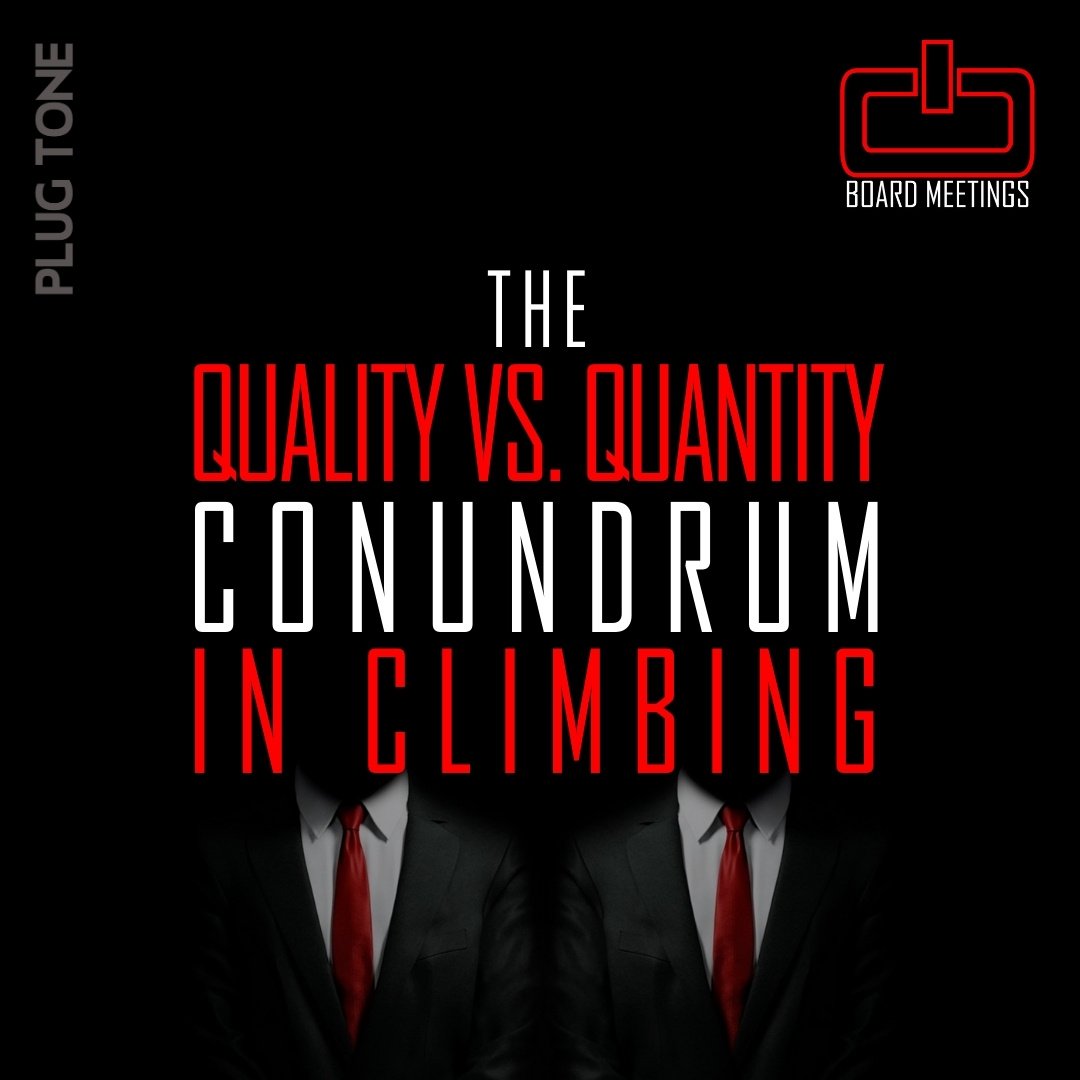


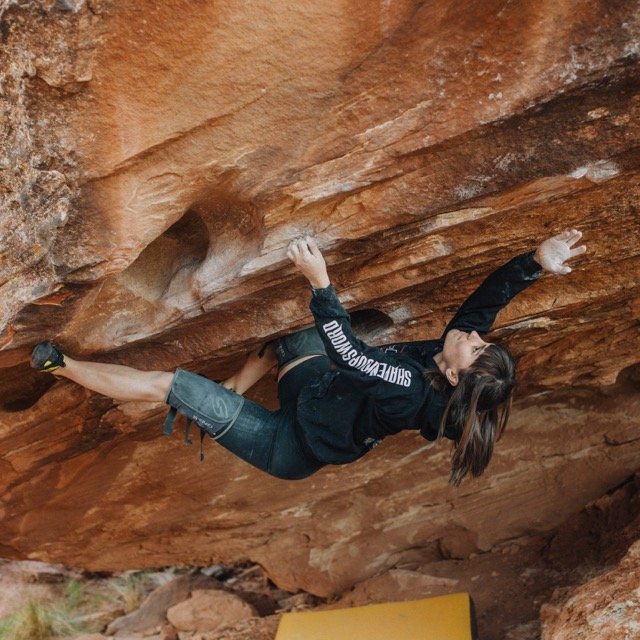

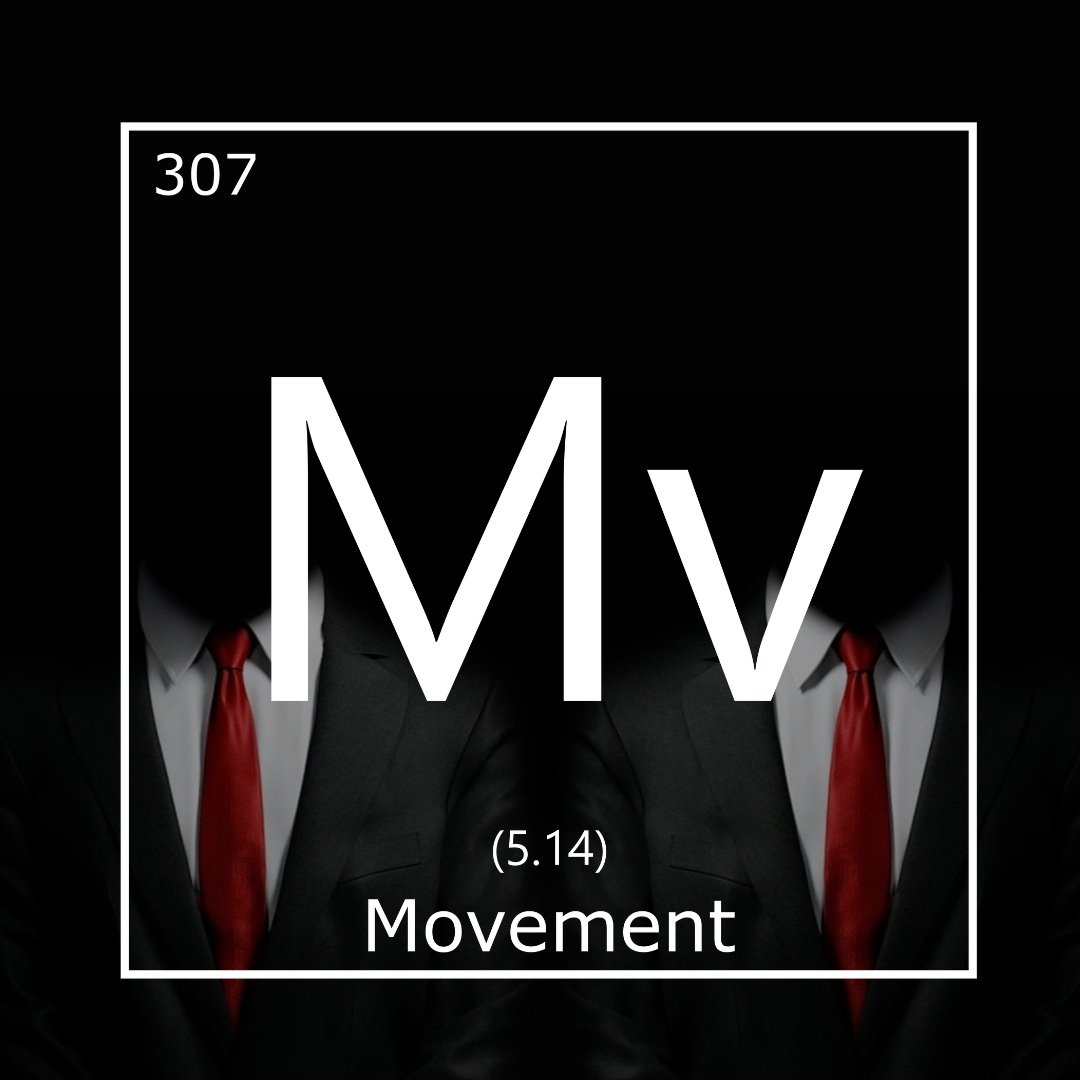
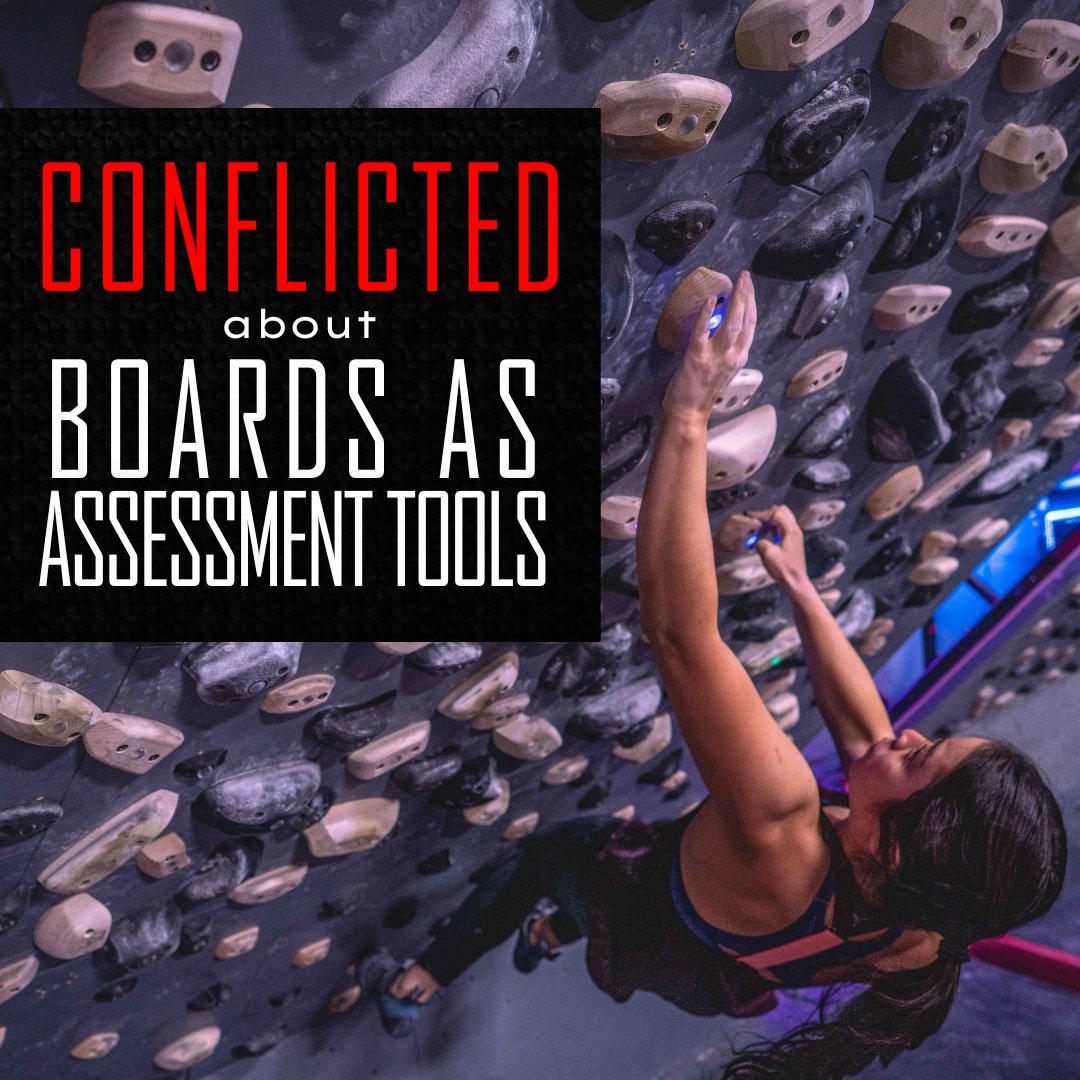
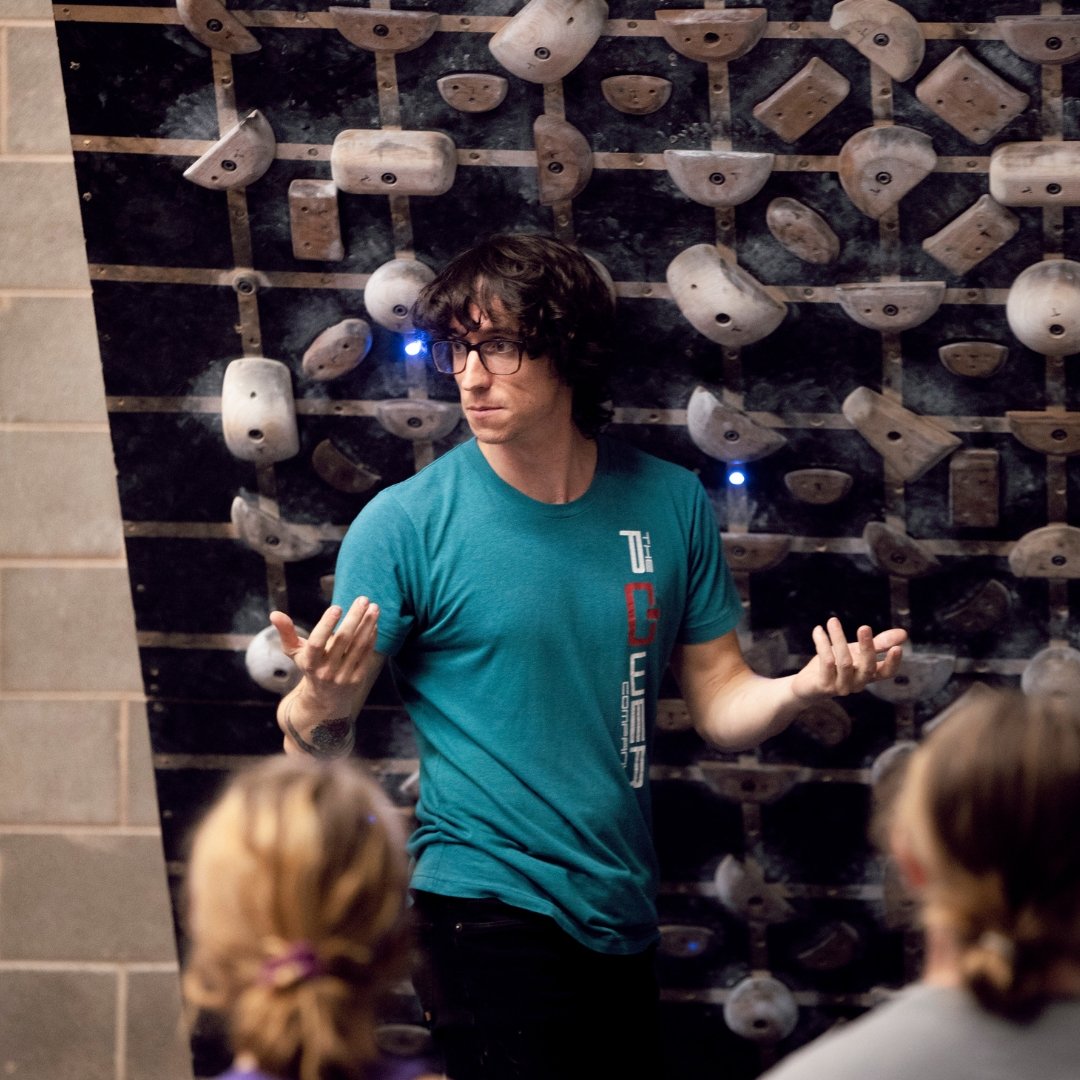
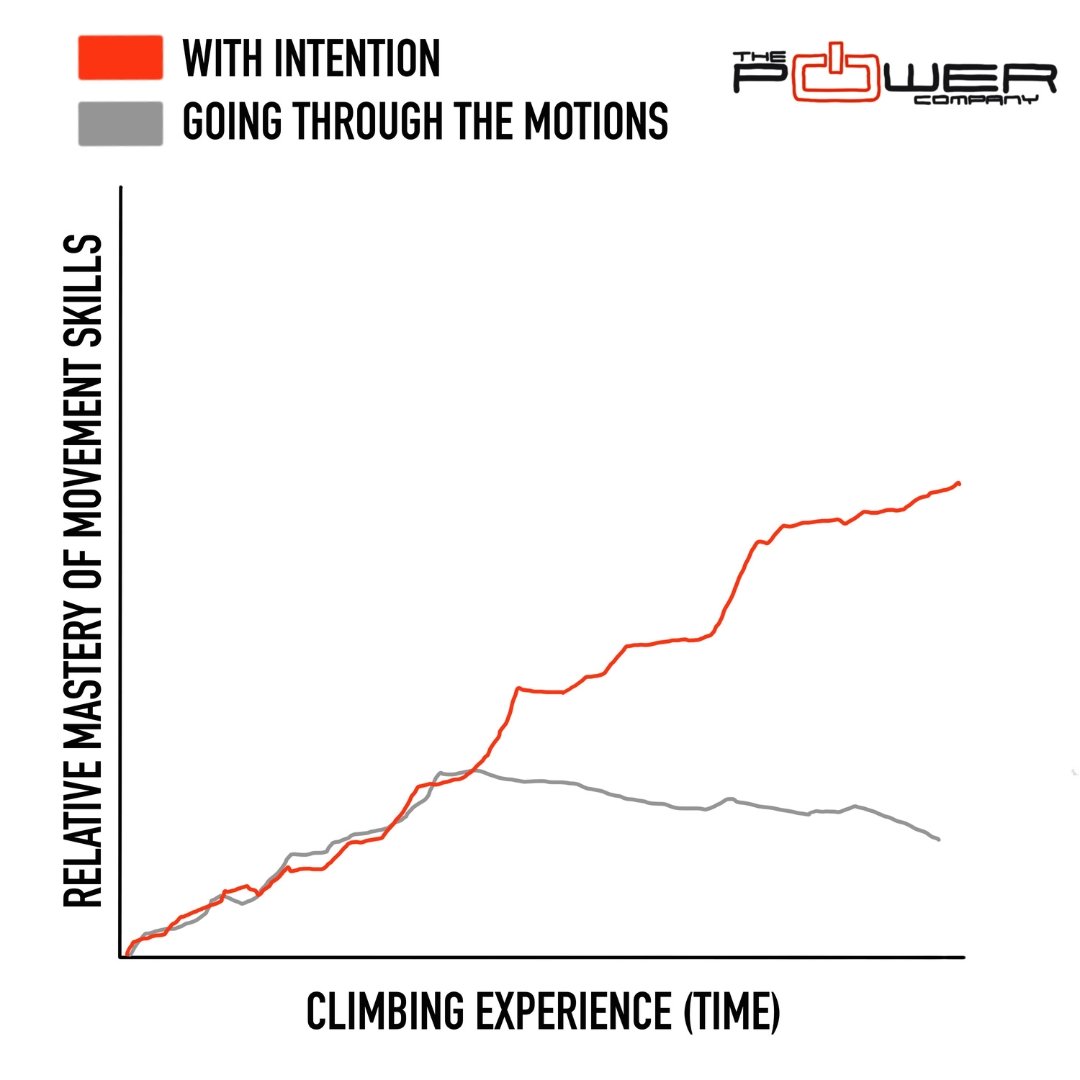




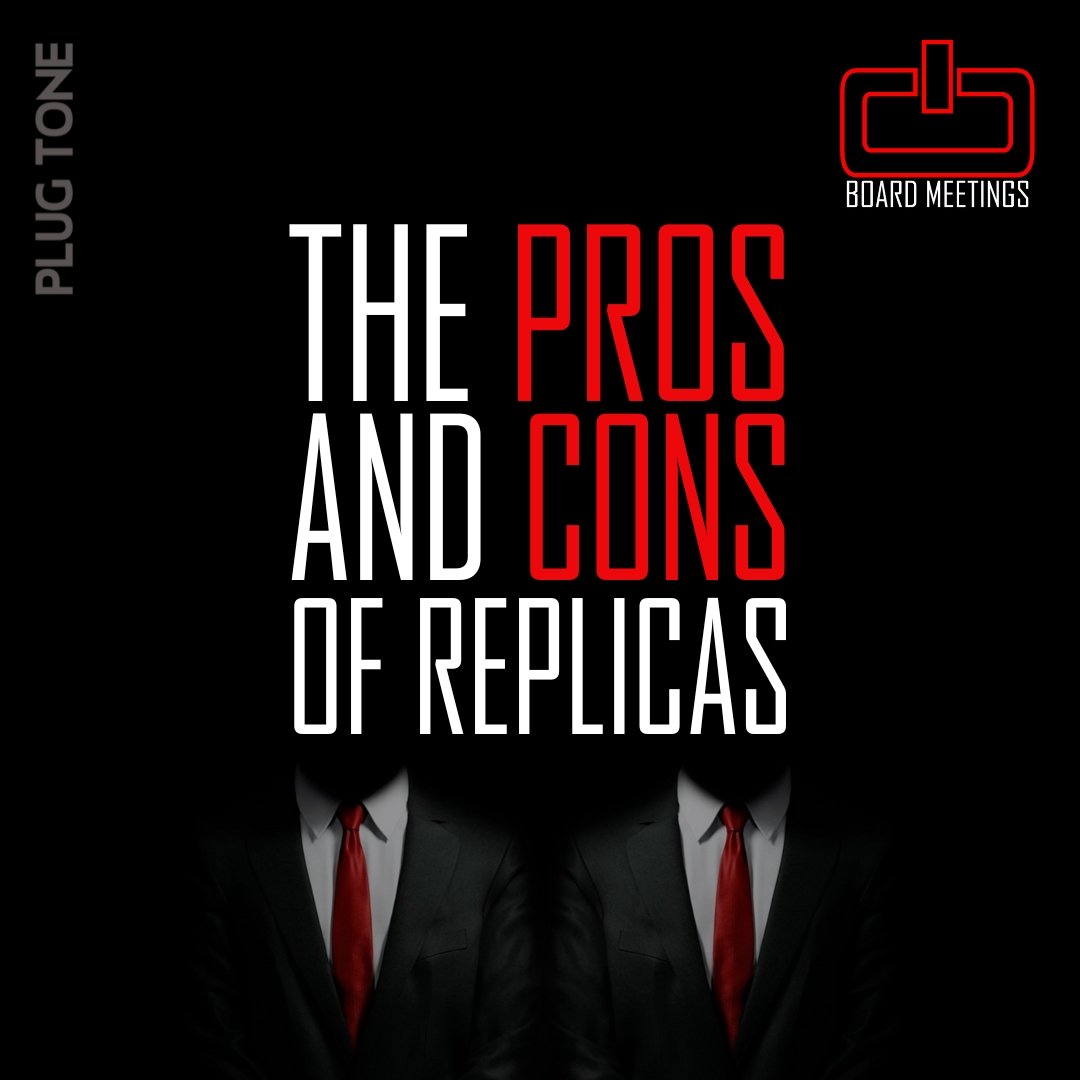


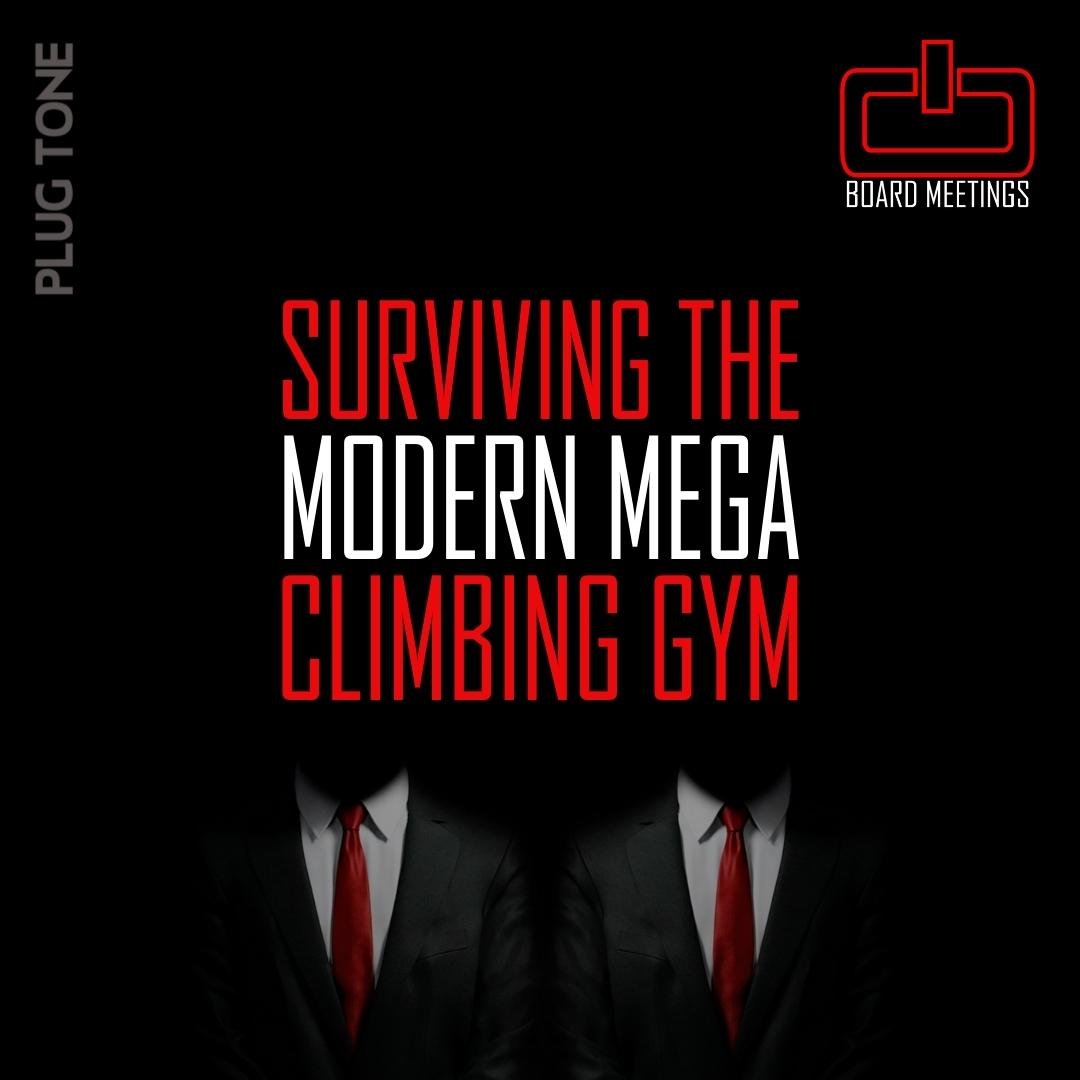


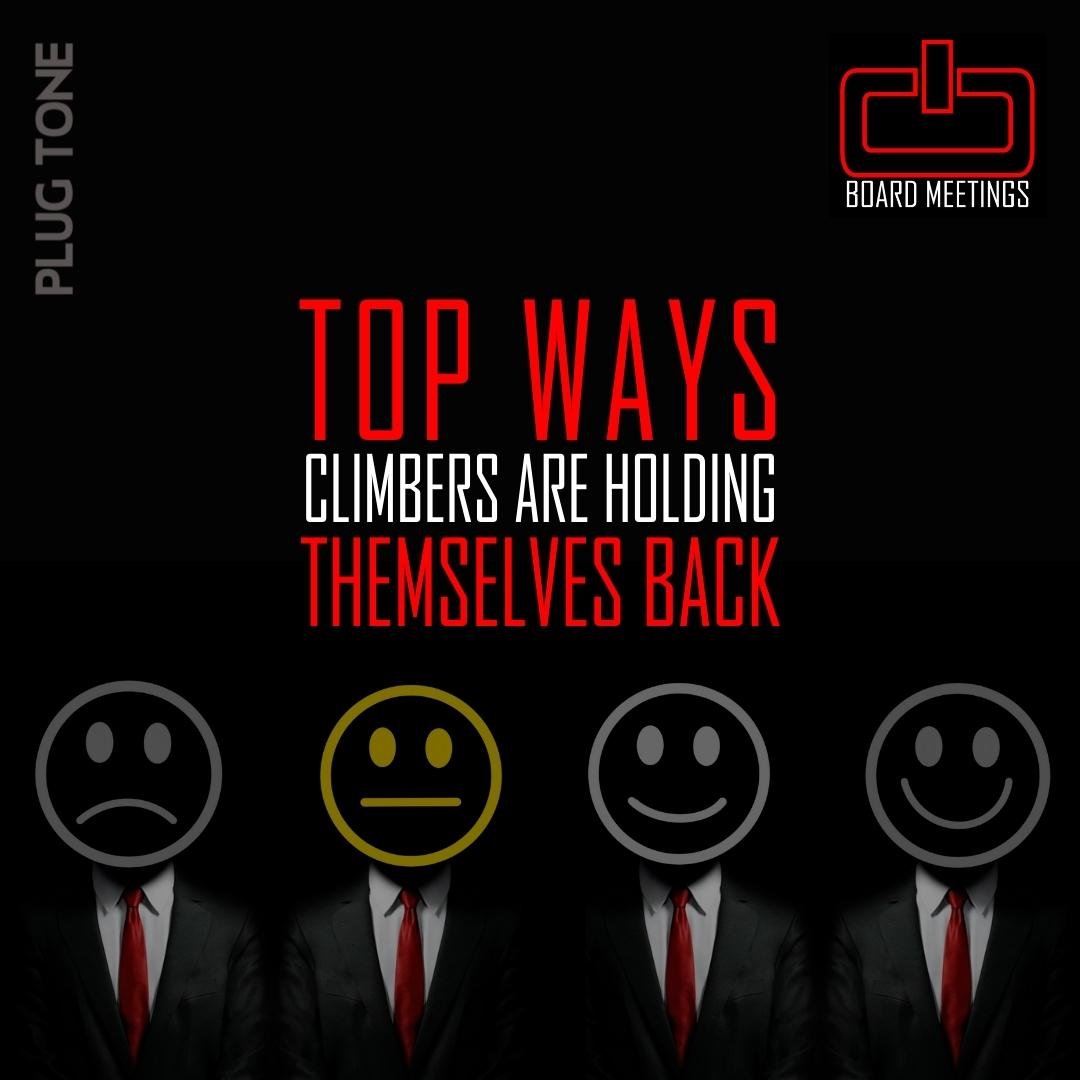



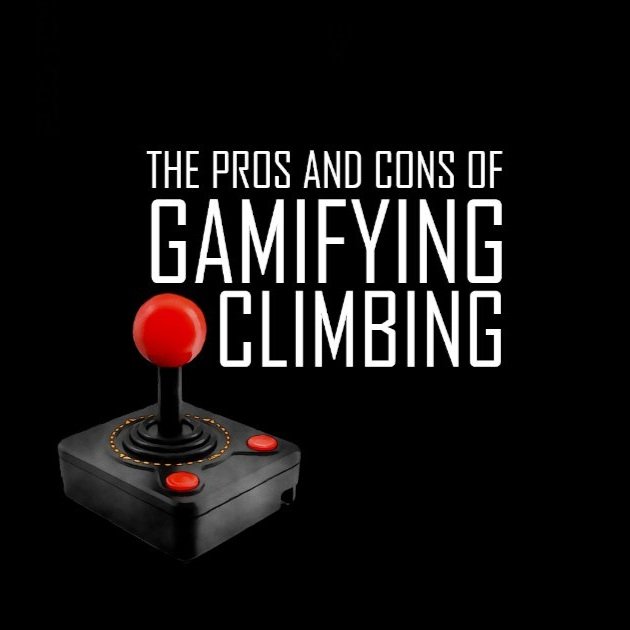






How do you know which is right for your situation?